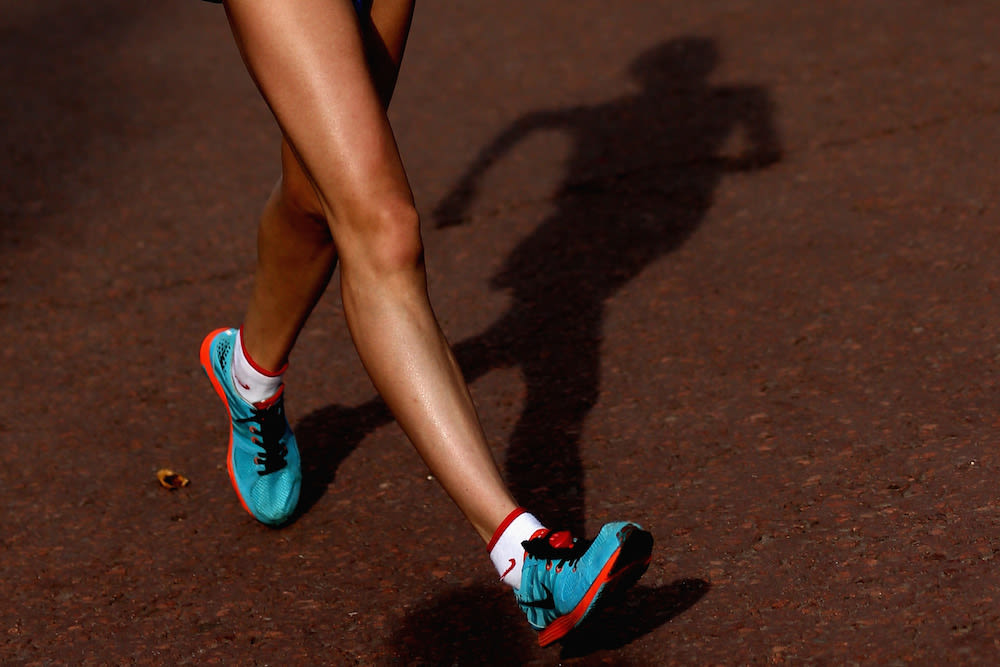Workouts falling in the less-is-more category have recently (/seemingly) become the fitness activity of choice. First, there was Aqua Studio's low-impact underwater cycling. Then, we tried out the Bar Method class, and its prescribed hundreds of minuscule lifts and bends, making our thighs quake, and then ache like never before. And, confirming the three’s-a-trend theory, we recently heard whispers about a trainer named Key Son who helps the likes of Daria Werbowy, Doutzen Kroes, and Marisa Tomei tone their bods by barely moving. Well, not exactly. His theory involves modified, beyond-basic movements—reaching, pulling, tiny lunges—and super light cardio (i.e., walking, not running).
So, we sped-walked over to our phones to give Son a call about his don’t-move (much) workouts. Since graduating from Cornell with a doctorate in sports medicine, the Ivy Leaguer has spent nearly two decades as a trainer, helping over 150 models (including Céline's own Daria, who he describes as “very disciplined' and “easily the most symmetrical and most athletic model I’ve ever worked with') saunter their way to fighting shape. After trying “everything' else out there in the fitness world, he swears that he hasn't found anything more effective in helping women get long and lean than “low-impact, modified exercises,” also known as very small movements, which, Son explains, “apply stress specifically to the areas the client wants to work on and, as a result, the body responds by toning and tightening in the right places,” We asked him to explain the theory behind toning vs. bulking, walking vs. running, and more:
The reasoning : “I work primarily with actresses and models looking to prepare for movies and commercial shoots. In these industries, everyone’s looking for structured shoulders, a thin, flat waist, long, lean legs, and toned hips... I tend to stay away from exercises that increase size. Also, time tends to be an issue for everyone, so I’ve created a workout where, in a small amount of time, you generate as much power as you can by combining resistance training with specific exercises to mold and sculpt the shape you want, decrease body fat, and strengthen your core. It makes the agencies happy. [Laughs]”
Don't buy into bulk : “My technique is very different. A lot of methods of training involve a lot of squats and jumps, which builds size on the hips and legs. Also, I don’t normally recommend spinning, because you end up exerting your outer-thigh muscles, which, when used extensively, will get bigger. Not only that, but there’s a lot of torque on your knee, so biomechanical issues can arise, and you build up the connective tissue surrounding the muscle—that, too, will get thicker. The same thing happens with gymnasts’ legs—they get larger, and that’s fine if that’s what you want. Generally, I say spinning every once in a while for fun is okay, but I wouldn’t recommend it as an exercise throughout your entire career,”
Setting pace:'Depending on a person's structure and proportions, running may or may not be beneficial. I have to actually see them and find out whether they have predispositions to putting weight on in their lower bodies, or if they have longer or shorter torsos compared to the length of their legs. If a person's legs are on the shorter side, I’ll usually have them walk instead of run, because muscles develop quickly in the legs, and can bulk. For walking, I recommend 30-45 minutes to start with, two to three times a week, and then maybe build up to an hour, three to four times a week, at a very consistent pace, just under jogging. And never, ever with incline. You don't want to build the calves, either,”
'Every program should have the following components,” Son explains. “Here they are:
-
Warm up and flexibility exercises , to get the body moving.
-
Balance and coordination exercises , to challenge the stabilizations systems of the body and develop communication between the muscular and nervous systems. This is a great way to alter body composition, because the body has to employ more muscles to stay balanced, and, as a result, more calories are used. It’s especially effective when you use multiplanar movements, like standing on one leg while pressing the arms forward like a push up.
-
Strength training exercises , like push and pull movements, and rotational movements done at varying speeds, in the standing position, where the body uses the most calories. Use a resistance band or body weight to improve cardiovascular efficiency, increase lean body mass, tissue strength, and bone density, and decrease body fat.
-
Core stabilization exercises, like a floor bridge and crunches to form proper muscle balance, building a foundation to move efficiently. Always pull in the abdominal region to improve posture and maximize your strength, power, and endurance.
'As long as you incorporate those four things, you should be successful with any kind of routine,” the trainer adds. Got all that? In case you're interested in a sample routine (we were), Son put together an extra special workout, just for ITG.
Photo via Getty.

